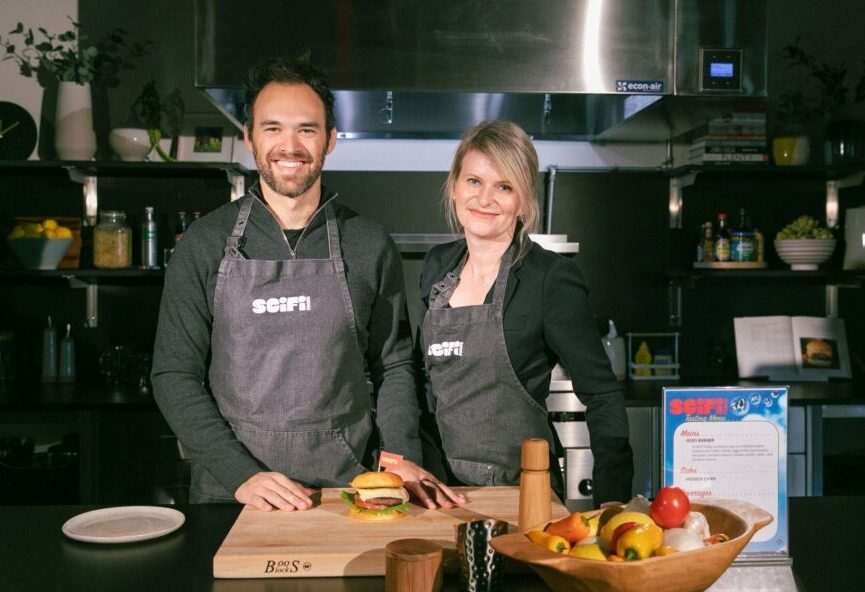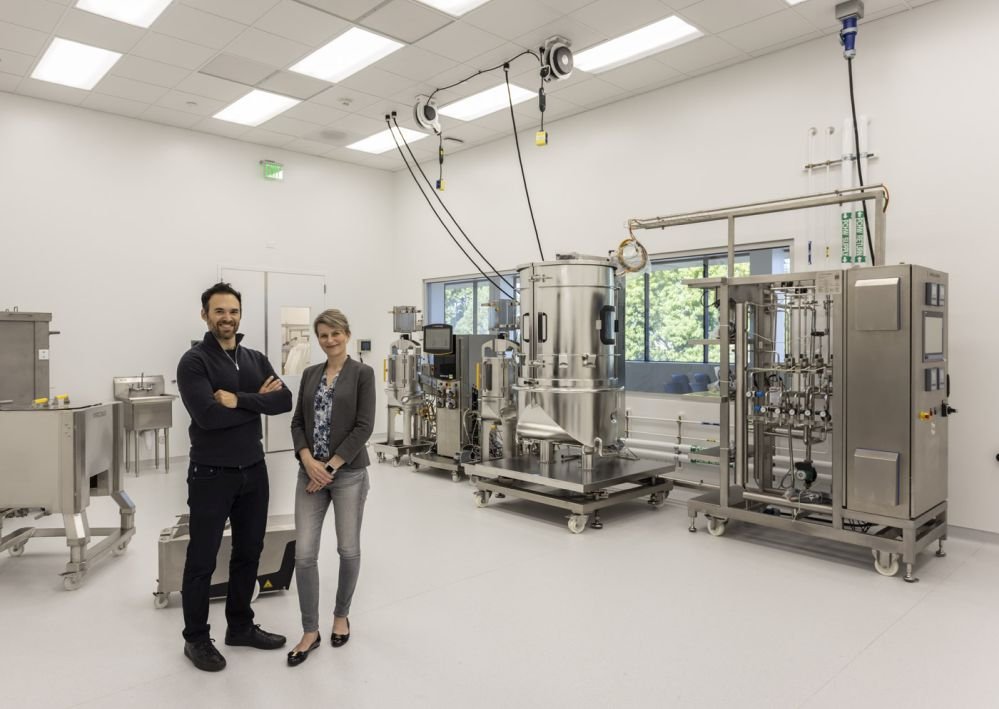Developing new cell lines takes time and money, two things the cultivated meat space sorely lacks, says The Good Food Institute (GFI), which has acquired cell lines and serum-free media formulations from defunct startup SCiFi Foods to make them available first to academia and later, the wider industry.
Making SCiFi’s cell lines and serum-free growth media recipes widely available will remove barriers to entry for future startups and help catalyze the field, reducing redundancies for all key stakeholders, claimed Dr. Amanda Hildebrand, VP science and technology at the GFI, a nonprofit dedicated to finding alternatives to industrial-scale animal agriculture.
“SCiFi’s pioneering work is like a baton in a relay. Given our role in the field, GFI was able to ensure that baton didn’t drop.”
‘There’s no standard cell line yet for cultivated meat’
GFI and Tufts University are initially making the cell lines available to academia and are working to enable industry access, said GFI principal cultivated meat scientist Dr. Elliot Swartz, who noted that the cultivated meat sector lacks commercially relevant cell lines that can serve as “research workhorses” analogous to CHO, HEK, and C2C12 cells used in biopharma.
“CHO cells produce something like three quarters of the world’s biologic drugs because everyone had the same cell line in their hands and could be speaking this sort of common language,” Swartz told AgFunderNews. “But there’s no standard cell line yet for cultivated meat.”
Some of the eight bovine cell lines acquired from SciFi Foods are immortalized (to keep dividing so you don’t have to keep going back to the source animal) and have been adapted to grow in suspension culture, a critical element when it comes to scale up, said Swartz.
“If we get these cell lines and media formulations into the hands of academic labs who publish their research, people can then build on that and collect data sets that can better inform techno-economic models and understand what things affect scale up like the concentration of ammonia or lactate in the media. A lot of the studies that have been performed in the past have relied on data from the biopharmaceutical sector, which always has this open question mark of how relevant it is to cultivated meat.”
It took SCiFi Foods “four years and tens of millions of dollars to develop these cells into commercial cell lines that grow quickly in suspension and in serum-free media,” observed SCiFi Foods cofounder Joshua March, who had proved the tech in 500-L bioreactors but was forced to call it quits in June 2024 after running out of cash.
“As a nonprofit at the center of all things alt protein, GFI was uniquely able to take our hard-won progress and leverage it for the greater good of the whole sector.”

Tufts: Moving research ‘out of the tissue culture flask and into suspension culture’
Dr. Andrew Stout, assistant professor, biomedical engineering, at the Tufts University Center for Cellular Agriculture, told AgFunderNews that the “most exciting” cell lines are immortalized bovine fibroblasts adapted for single cell suspension.
“I think this is going to really open a lot of doors for more folks to move their research out of the tissue culture flask and into suspension culture systems, which will really raise the relevance of a lot of the research that’s happening in academia.
“Chicken fibroblasts are quite easy to adapt to suspension, but it’s exciting to have the bovine option as well. Likewise, as these cell lines were developed with commercial application in mind, they made some decisions I kind of wish we’d made when we were making immortalized bovine satellite cells [at Tufts] that are useful research tools, but not suitable for food.”
While fibroblasts are associated with connective tissue, they are versatile, and can be trans-differentiated “into something that looks more like a fat cell,” which is what Believer Meats is doing with chicken fibroblasts, noted Stout.
“A lot of the products companies have been creating so far have used fibroblasts, which have a lot of advantages on the bioprocess side, but there’s still more to learn in terms of what exact type of food functionality these cells provide in a hybrid product [containing cultivated cells and plant proteins].”
And even if you don’t tweak the fibroblasts to get them to accumulate lipids, for example, it doesn’t mean the harvested cells are “gristly” like connective tissue, he said. “When we’re culturing them in cell culture, they might be secreting similar proteins [as they do in a live animal], but it’s not in an environment where you would get these dense collagen networks.”

Cell lines and IP in cultivated meat
Asked whether startups would want to develop their own cell lines (rather than using SCiFi’s cell lines) in order to have IP of value to investors, Stout said: “If I were starting a cultivated meat company, I would love to be able to access these immortalized and suspension cells. But it’s [using SciFi Foods’ cell lines] not the end of the story, it’s a starting point.”
“It’s not like you take them off the shelf and they meet all your needs,” he explained. Startups would still likely engage in further cell line, bioprocess, and media optimization.
“So when people say, but aren’t your cell lines valuable IP? Yes, but these cells [from SciFi] might just be the foundation upon which your [new] IP is built, not the sum total of the valuable IP.”

GFI: ‘Most media formulations are trade secrets’
As for media formulations, said Stout, “There are definitely other companies that have developed their own minimal media, that don’t use [expensive components such as] insulin or transferrin, maybe don’t use albumin, the real thorns in the side for media development right now. But they’re understandably not sharing their formulations. So having [the SCiFi animal serum-free media formulations publicly available] kind of opens that next door. Again it’s a great starting point.”
Swartz at the GFI added: “Most media formulations are trade secrets and the formulations that are [publicly] available are designed for low-density adherent cell culture that’s really not commercial. But a lot of academic groups still look to those formulations because that’s what’s available if they want to model techno-economics or do life cycle assessments.
“But having access to the formulations that are used in industry, where they are growing cells at a higher density, means [researchers] can be more accurate about these assessments now.”
Every species and cell type is going to have some variability in metabolism and required inputs, he said, “But I think [SCiFi’s IP] is generally applicable as a starting point at least to mammalian species although the exact concentrations of certain amino acids may need to be tuned. This is really the first media formulation that is going to be public, that’s commercially relevant for cultivated meat, so it’s a huge level up from where we were, knowledge wise.”
More generally, he said, academic researchers “have to go out and biopsy animals, acquire cells, develop the cell lines, develop the media in a process that can take years and millions of dollars. With this acquisition we can leapfrog that and get academic labs to have more commercially relevant and applicable research that can be more easily translated to the field.”
He added: “I can’t comment on whether GFI will pursue additional events like this as more companies approach the end of their [financial] runway, but we know there are other parties that are interested in essentially replicating what we’re doing here… other philanthropic nonprofit entities [interested in] acquiring the assets of companies and sharing them openly.”
According to Swartz, “Tufts will be the distributor of the cells and any academic group will be able to request access. And given what we know, I’m expecting a lot of interest.”
Positive signals for cultivated meat
Stepping back to look at the progress of the cultivated meat sector, which has seen funding almost dry up in recent years, Swartz said, “Some companies may have overhyped their claims, but the claims around lack of economic viability were also overhyped. The truth is always somewhere in the middle.
“I have a good bird’s eye view on the overall development of the sector and the more that we dig into the costs, the funding that’s going in from governments [in some markets], the amount of student interest, the amount of new researchers that are getting involved, the amount of b2b companies that are forming and supporting the sector, those are all positive signals that have been quietly growing over the past few years.”
He added: “I think public knowledge around cultivated meat comes from what’s published in academia, but that’s really not where the leading edge of the industry is. People have a misconception around the technical readiness of cultivated meat and still think [fetal bovine] serum is being used [in media], for example, which it isn’t. A lot of these things have actually been solved [in industry] for a long time.”
Researchers interested in accessing the cells can join the waitlist by completing this form. Shipments to academic researchers will begin first, with Tufts and GFI working to facilitate access to the cells by commercial entities at a later phase. Media formulations are open-source and available here.
Further reading:
Under six months of runway and no term sheet? SCiFi Foods’ guide to a ‘graceful exit’
Meatable acquires Uncommon Bio’s cultivated meat platform as latter pivots to therapeutics
The post Exclusive: Open-source moment for cultivated meat as GFI releases SCiFi Foods’ cell lines to academia appeared first on AgFunderNews.














